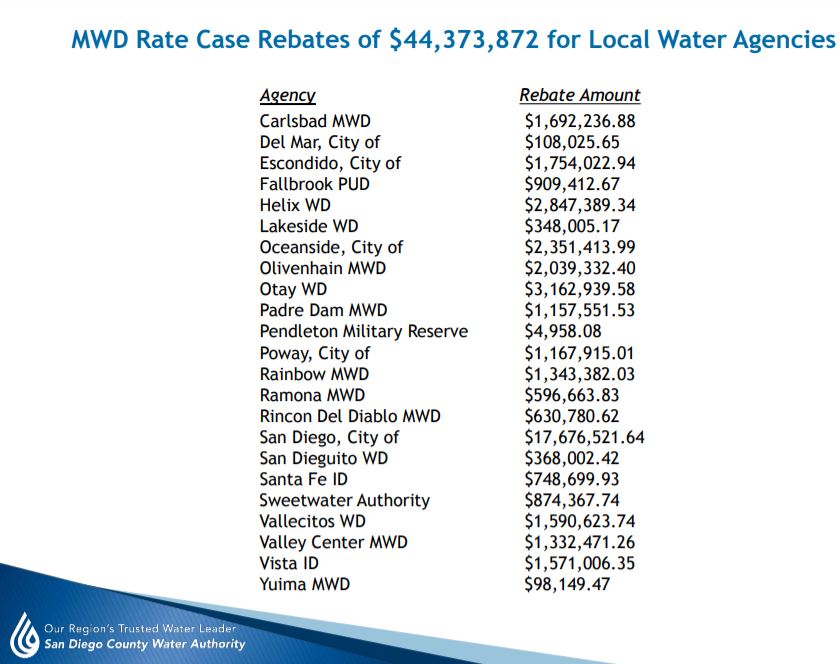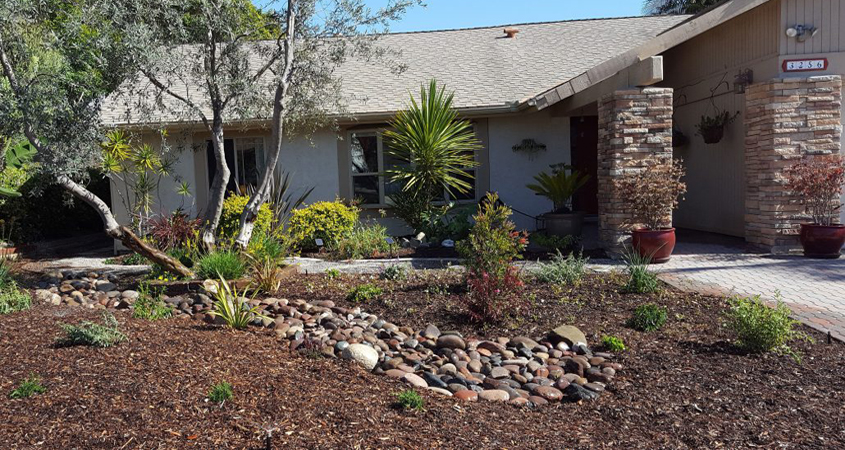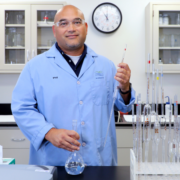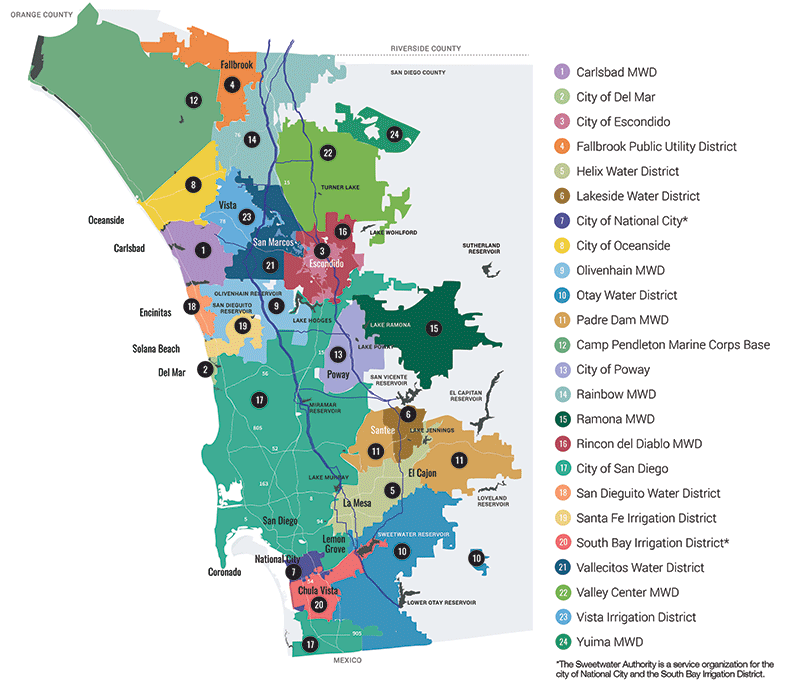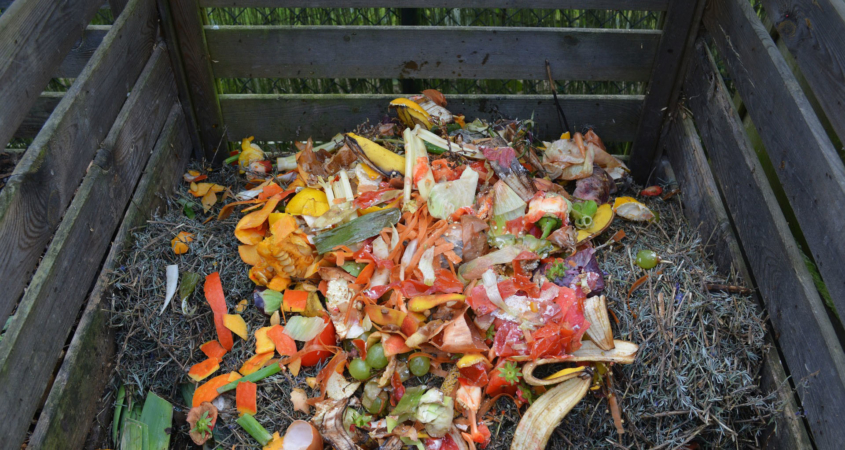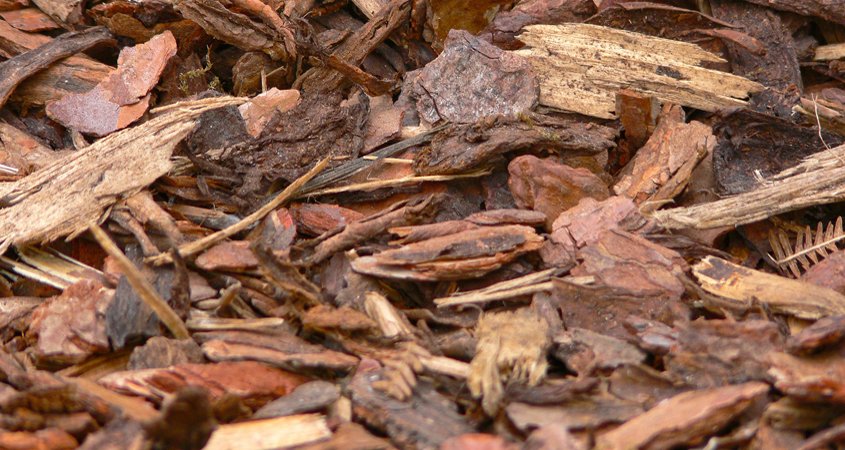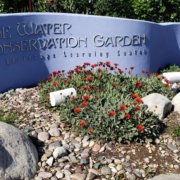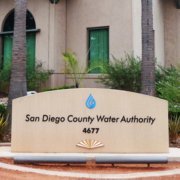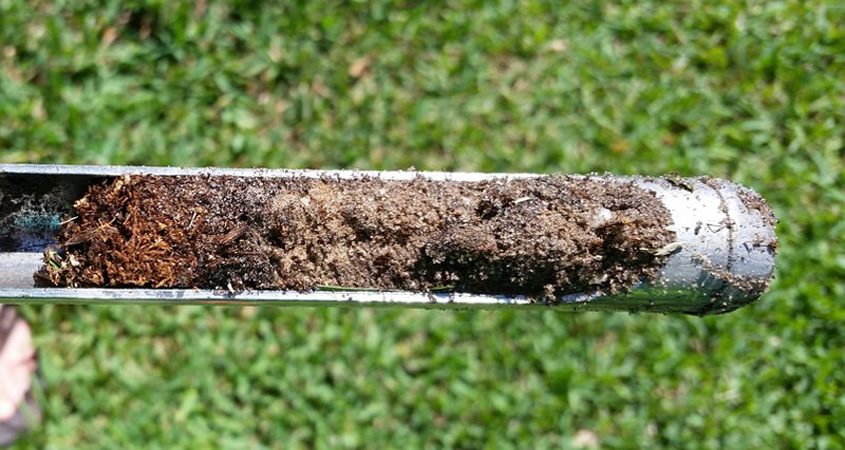The annual “Be WaterSmart” student poster contest is a favorite tradition in many San Diego County classrooms, including elementary schools in the Fallbrook Public Utility District. In most years, 250 students submit entries, with the top submissions selected for publication.
But 2020 wasn’t a typical year. Remote learning challenges due to the coronavirus pandemic meant little time left for students and teachers to participate. Fallbrook PUD public affairs representative Noelle Denke normally visits every participating classroom in October for a fun, interactive water themed bingo game to teach students about water conservation and get their minds rolling on poster themes.

Fourth-grade teacher Guillermo Acevedo loves the “Be WaterSmart” poster contest. Acevedo found a way to make it work and was the only teacher in the school district whose students participated. Photo: Courtesy Guillermo Acevedo
Guillermo Acevedo teaches fourth grade at Live Oak Elementary School and loves the “Be WaterSmart” poster contest. His students have participated for 16 years, and he wouldn’t give up on the contest he loves. Acevedo found a way to make it work this year.
Thanks to Acevedo, 16 students submitted entries. They were the Fallbrook PUD’s only entries in 2021, and there were just enough to make the annual calendar come to life.
Teamwork plus creativity teaches valuable lesson

Jacqueline Rosas puts the finishing touches on her artwork, which was selected for the cover of the FPUD 2021 Be WaterSmart calendar. Photo: Fallbrook PUD
The annual contest is open to all fourth-graders in FPUD’s service area. Teachers play a key role in encouraging or requiring their students to enter. Fourth-graders are chosen because they have studied water conservation and the water cycle in earlier grades.
Since in-person classroom visits were not an option, and uncertainty remained whether students would return to the classroom soon, Denke wasn’t sure if there would be any participation.
“No participation means no calendar,” said Denke. “So I reached out to Mr. Acevedo to see if he had any ideas. Together, we brainstormed. We extended the deadline, made a video explaining the contest and sent it to all the fourth-grade teachers in the district.”
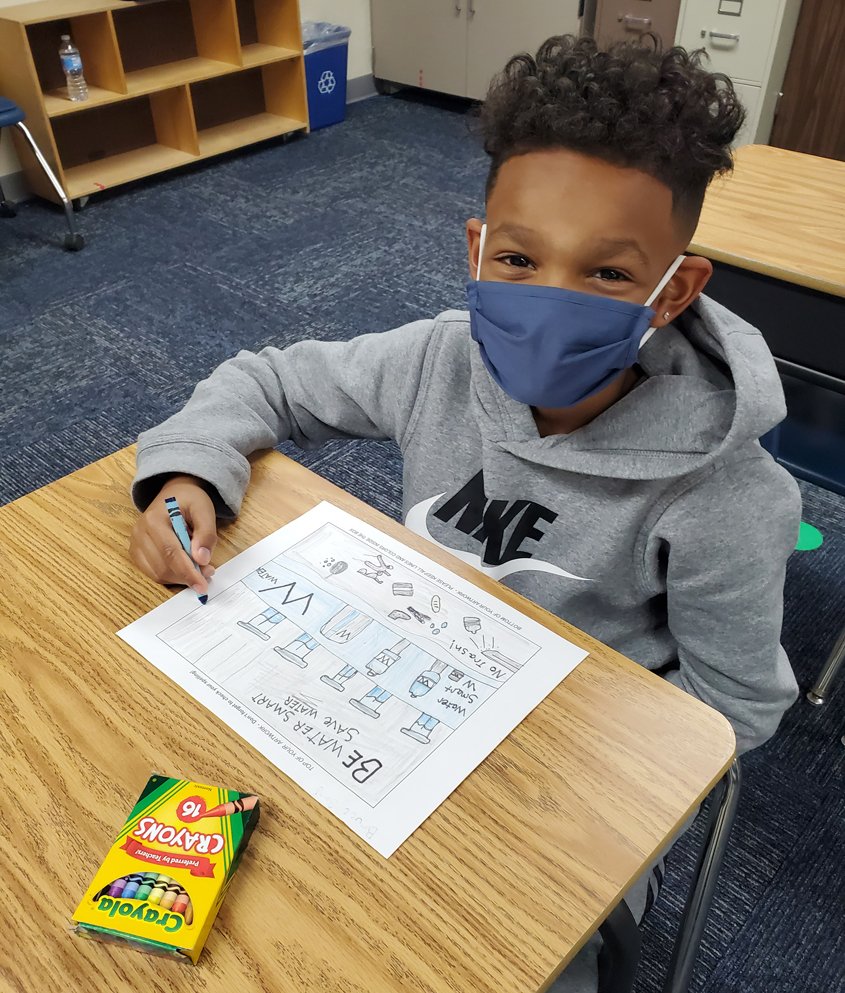
Live Oak Elementary School student Bruce Byrd. Photo: Fallbrook PUD
During a brief, two-week return to the classroom in January, Acevedo worked with his students to make their posters. All 16 submissions came from his class. All ended up being high-quality choices for inclusion in the 2021 calendar.
“This is by far my favorite contest,” said Acevedo. “As teachers, we are approached with so many contests. This one gives the kids the most recognition. They learn so much and have so much fun playing water bingo and then making their posters.”
Winning students and Acevedo were recognized at the Fallbrook PUD virtual board meeting February 22.
Fallbrook student calendar poster contest winners
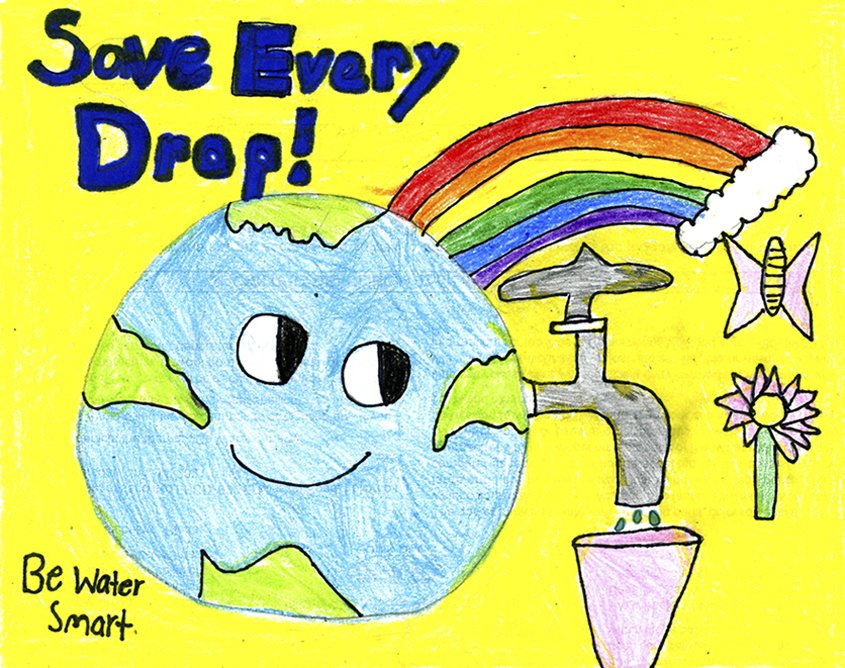
First Place winning poster by Jaqueline Rosas. Photo: Fallbrook Public Utility District
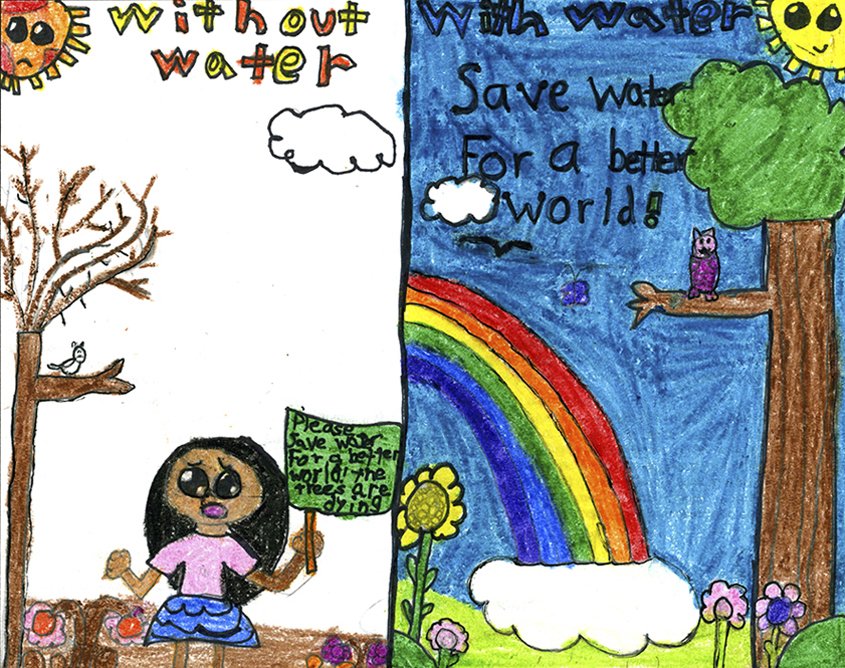
Second Place winning poster: Camila Palma. Photo: Fallbrook Public Utility District

Third Place winning poster by Liam Rafalski. Photo: Fallbrook Public Utility District
Additional winners include Bruce Byrd, Adrian Calderon, Edgar Campos, Annabella Cunningham, Brandon Garcia, Jocelyn Garcia, Tobin Marshall, Natalie Mendoza, Ryder Orozco, Evan Pellanda, Deisy Ramos, Ewny Sebastian, and Noah Varela.
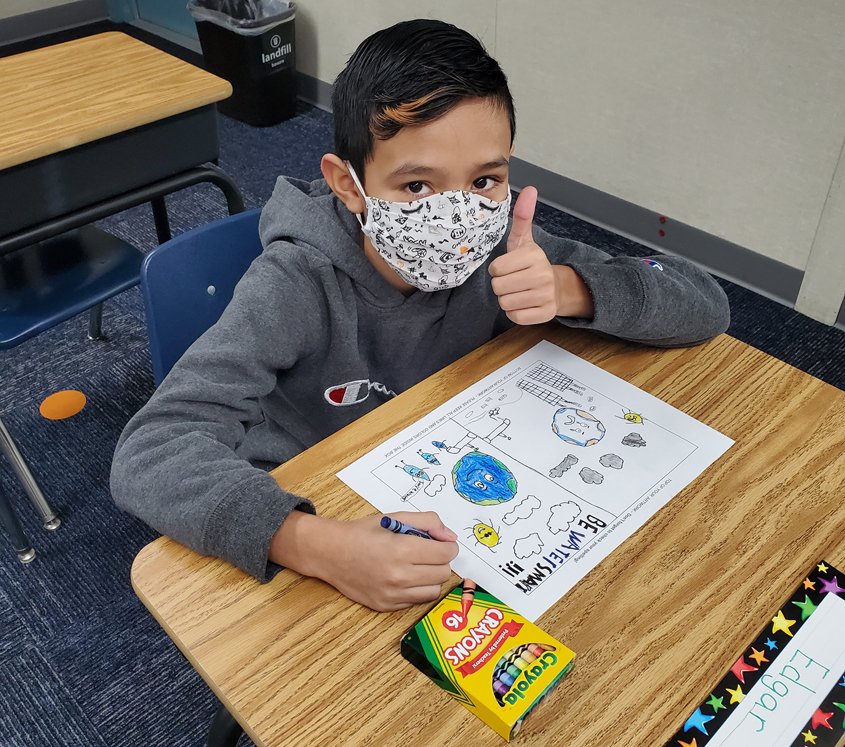
Live Oak Elementary student Edgar Campos enjoys the creative process. Photo: Fallbrook PUD
This will be the first time the annual calendar will feature entries from just one class. It is also the first time FPUD will be producing an 18-month calendar. The free calendar can be picked up at Major Market, Northgate Market, Albertson’s, Joe’s Hardware, and the Fallbrook Chamber of Commerce.











